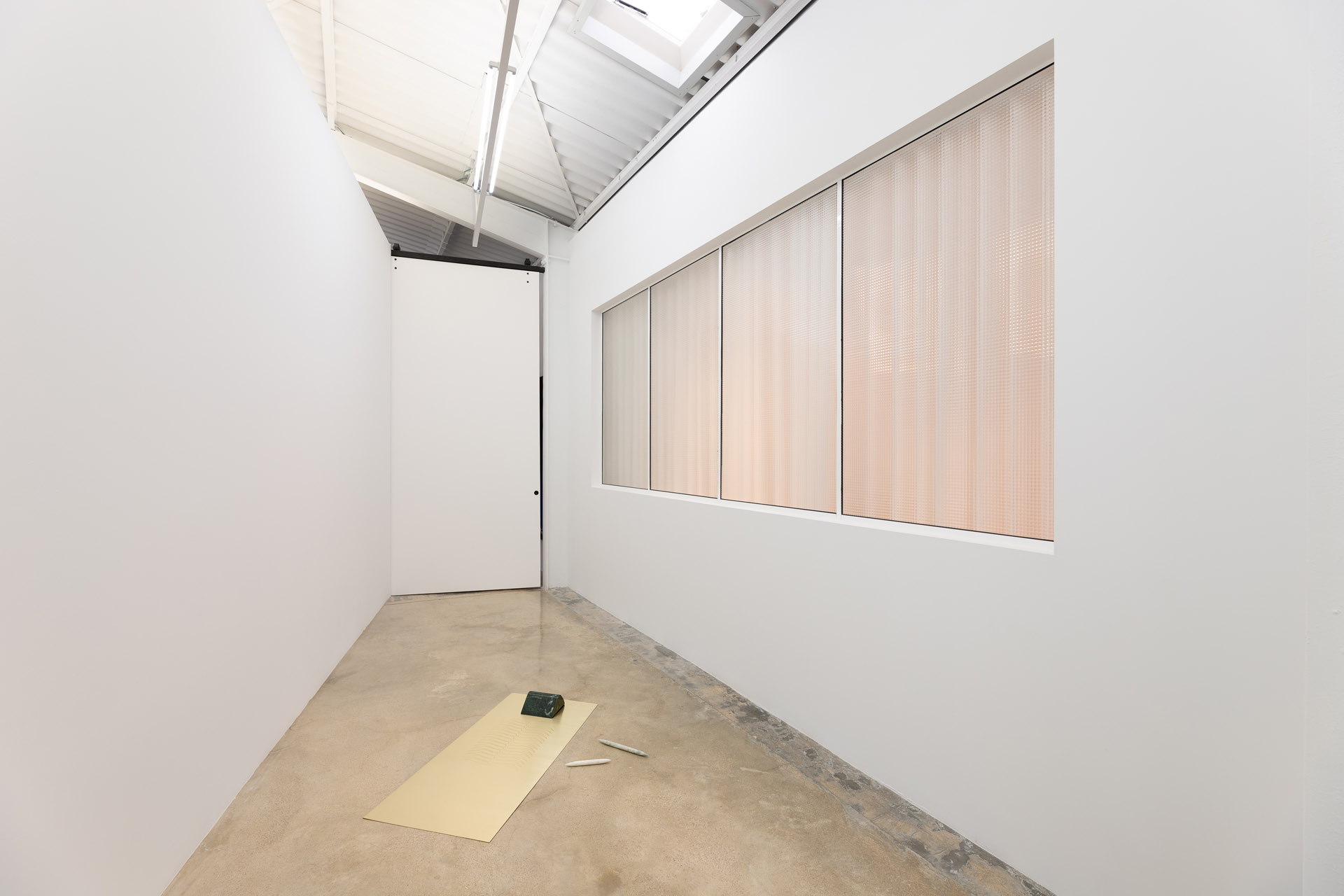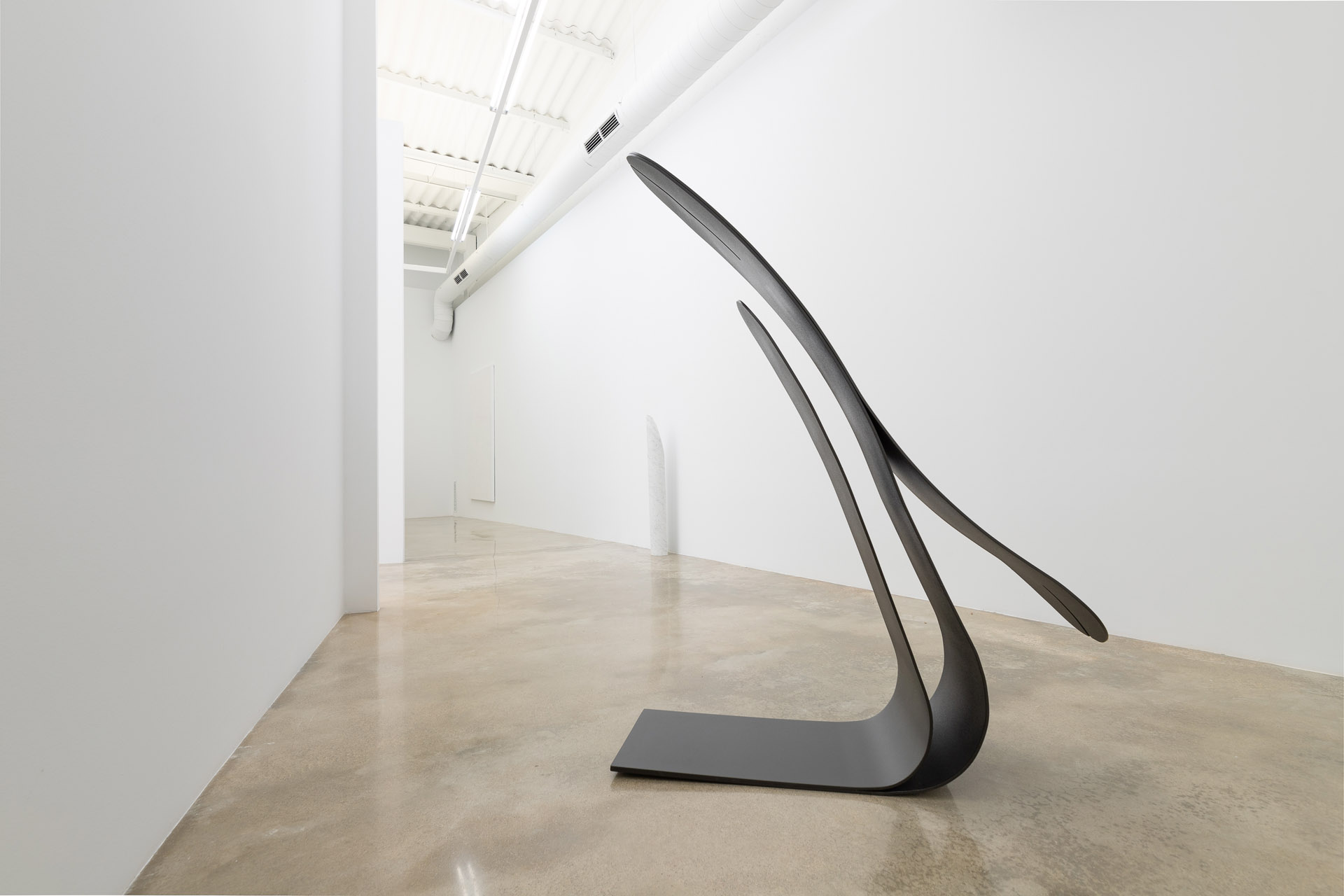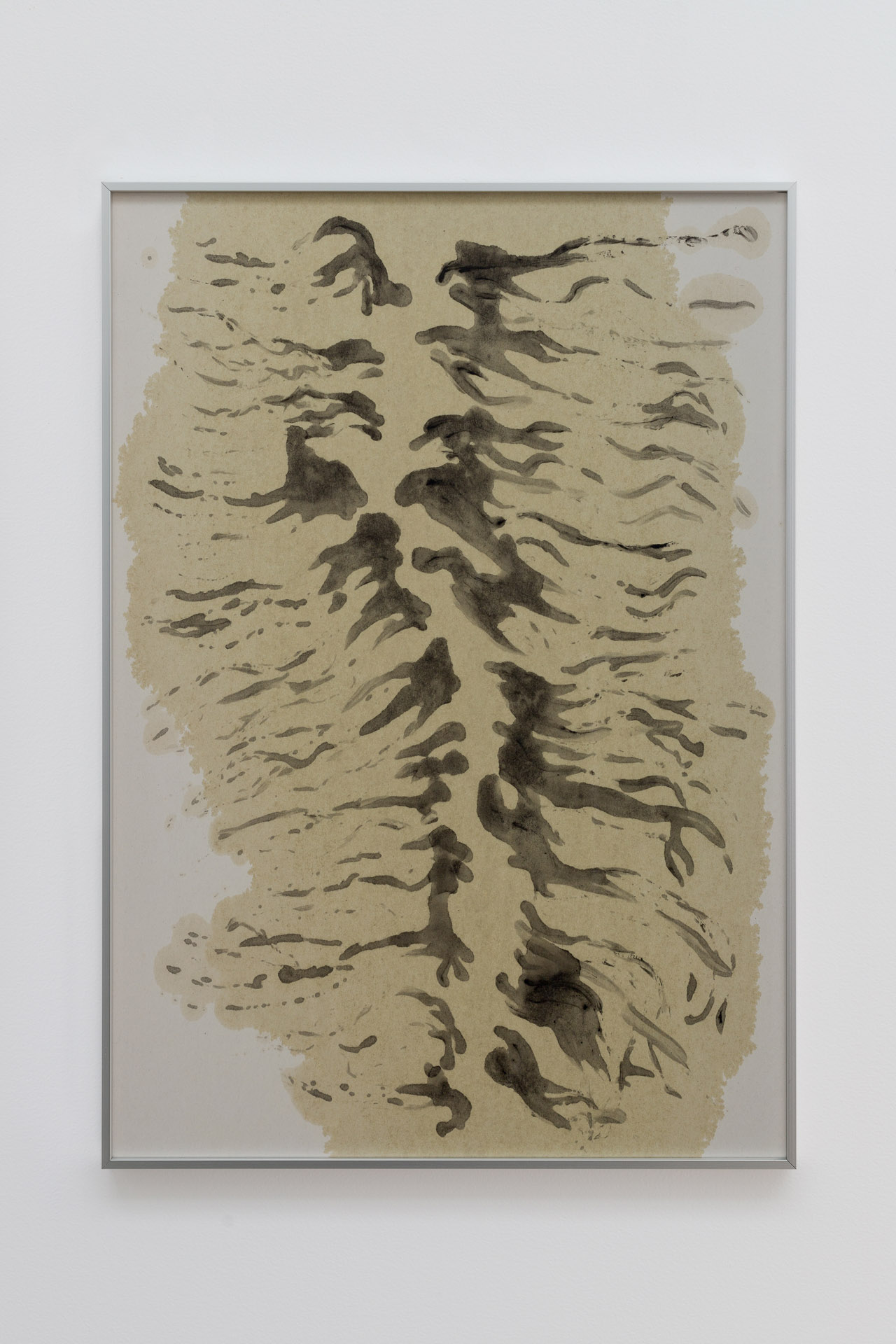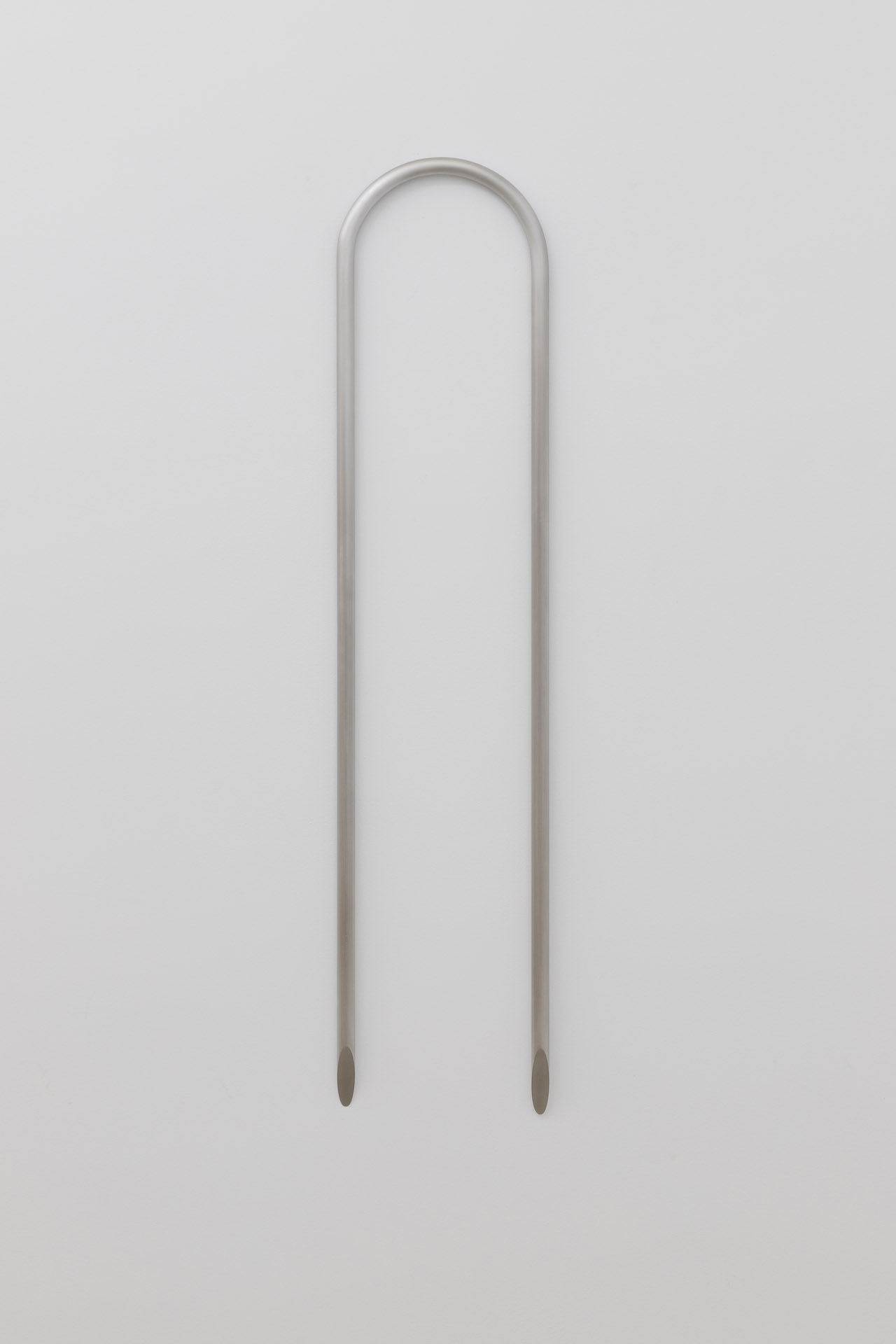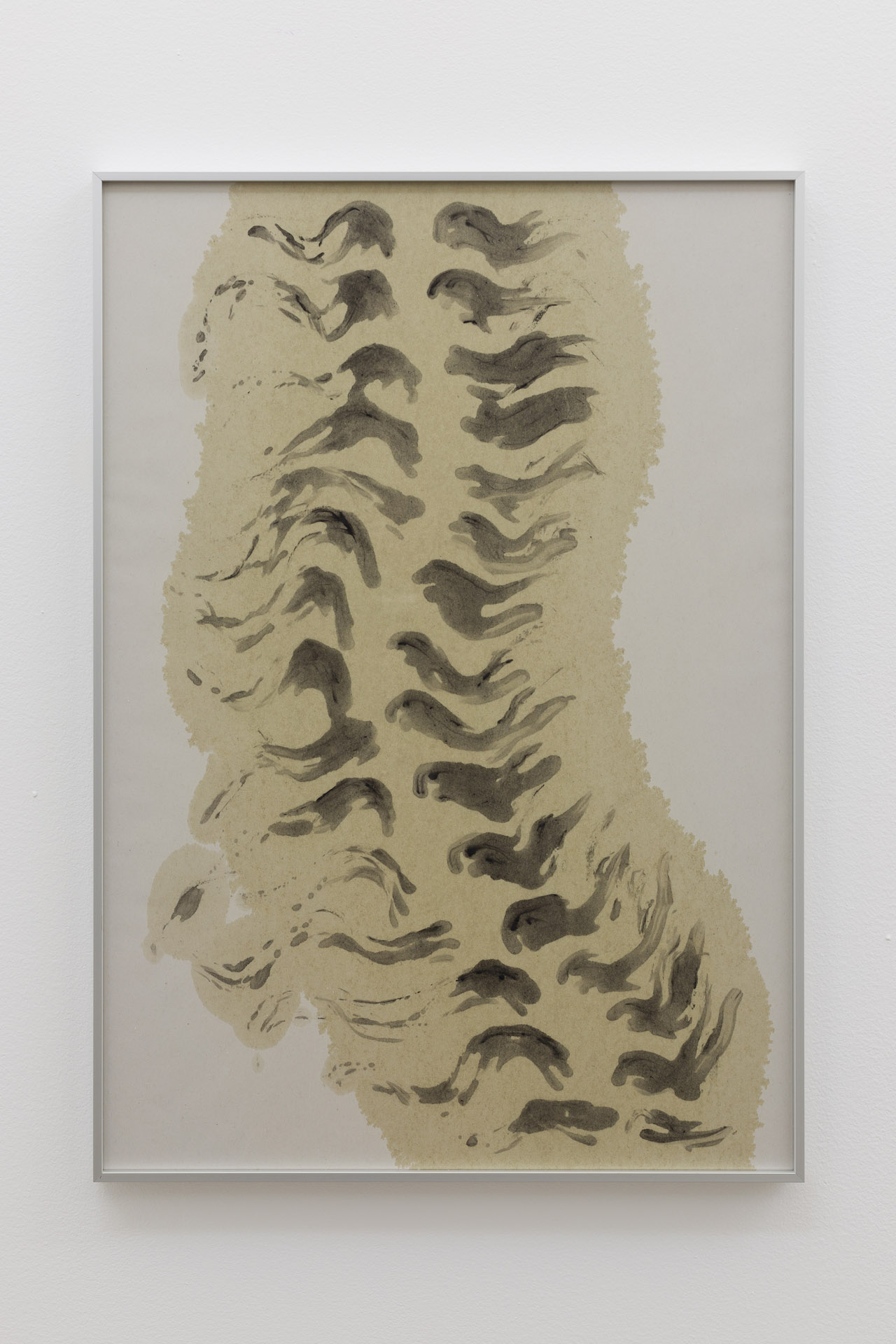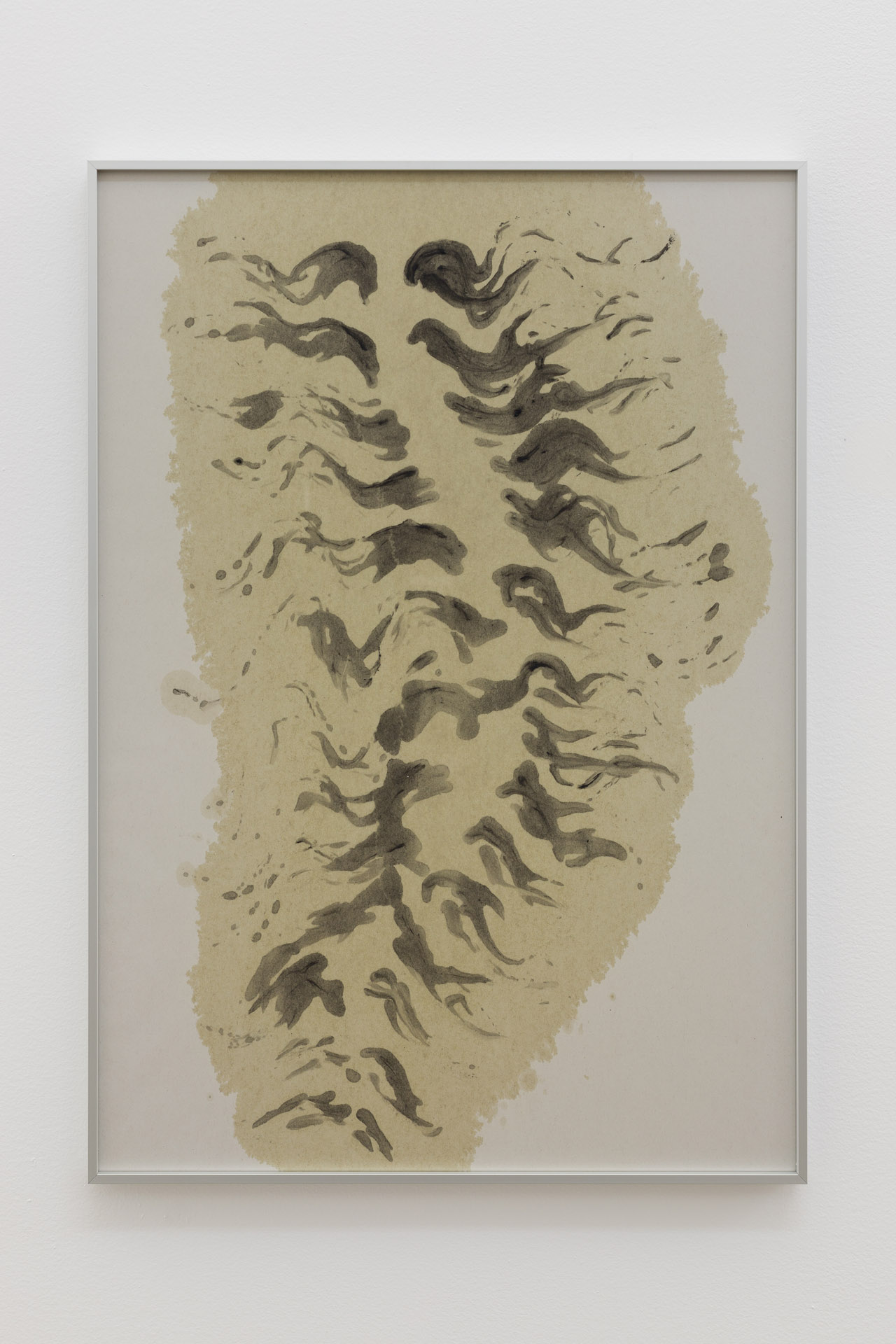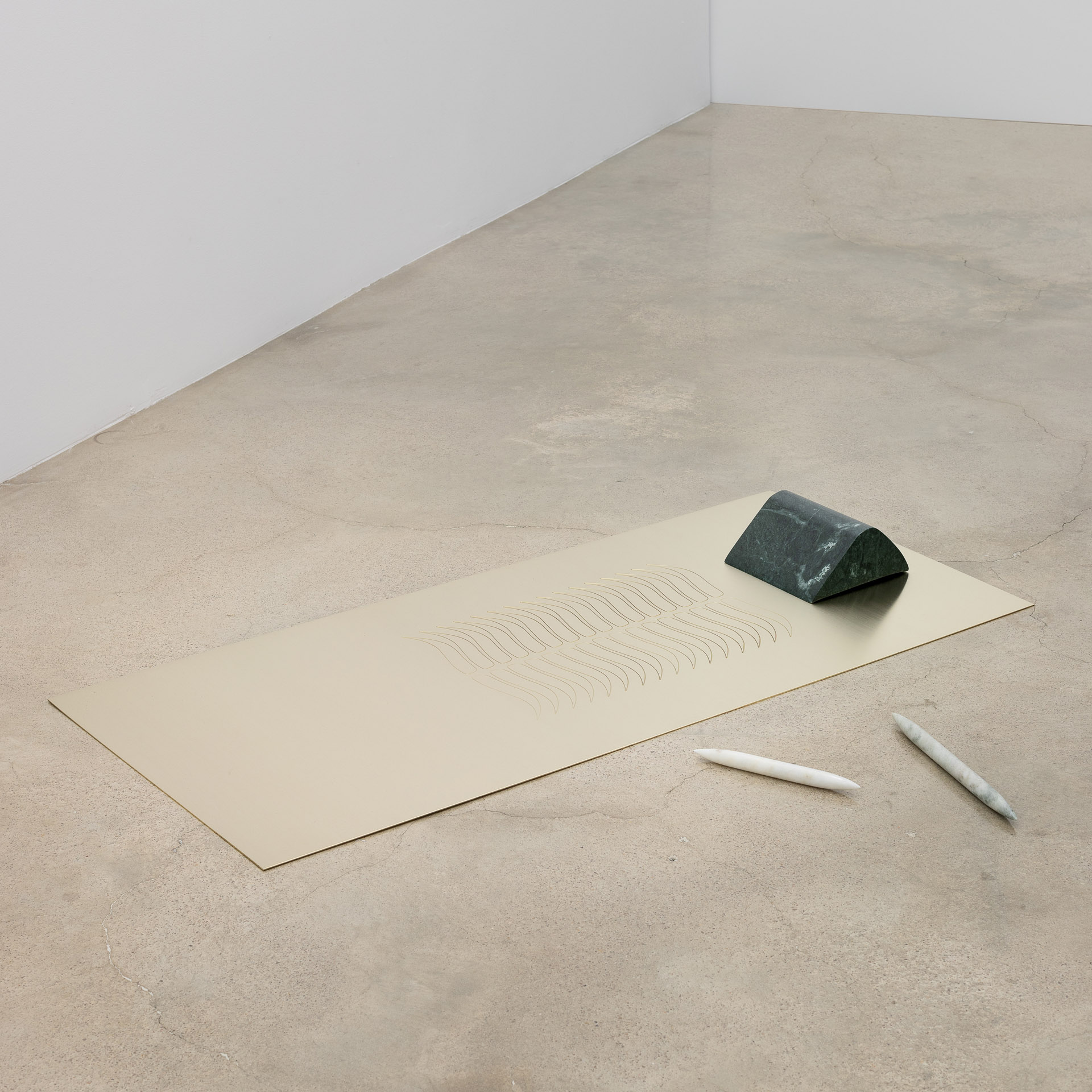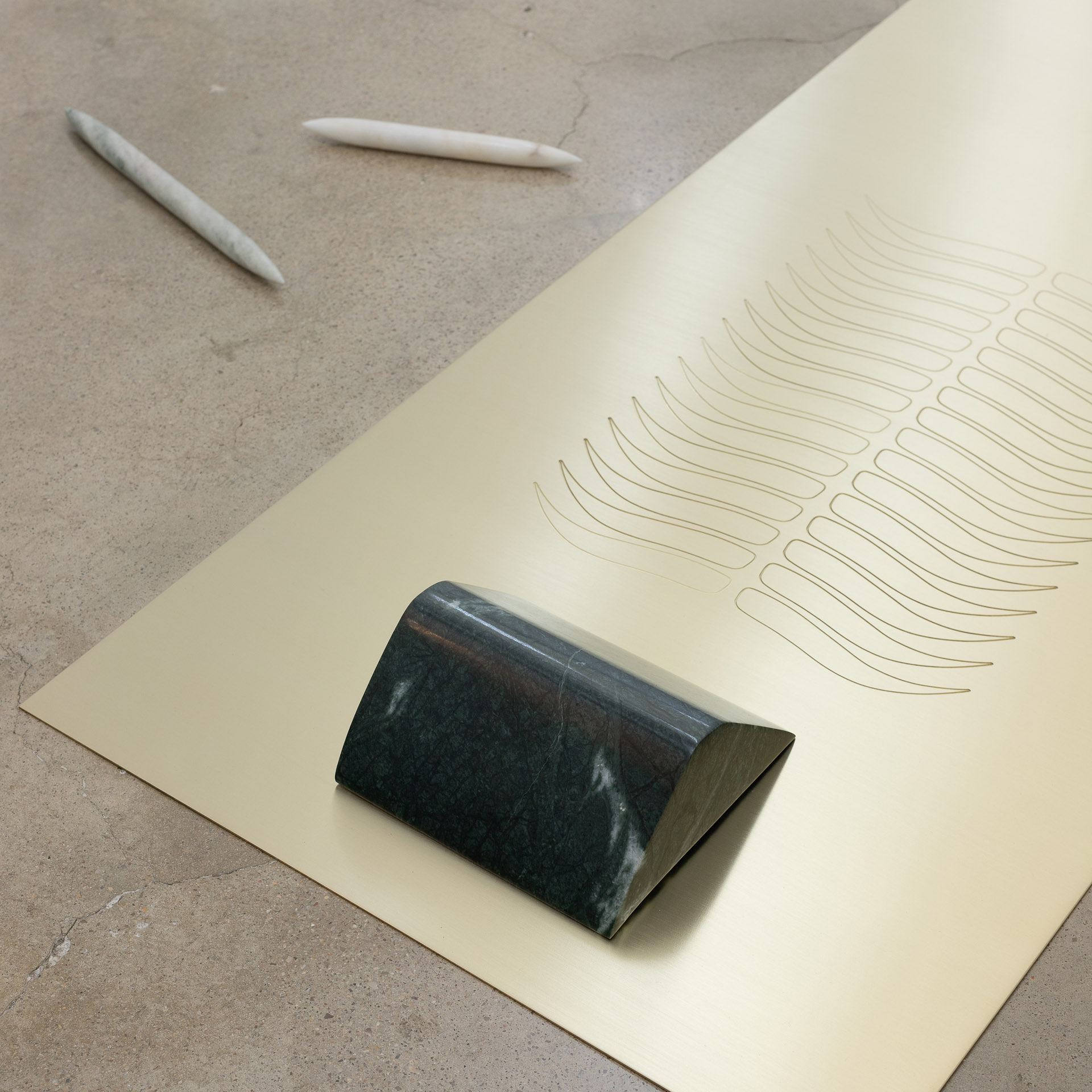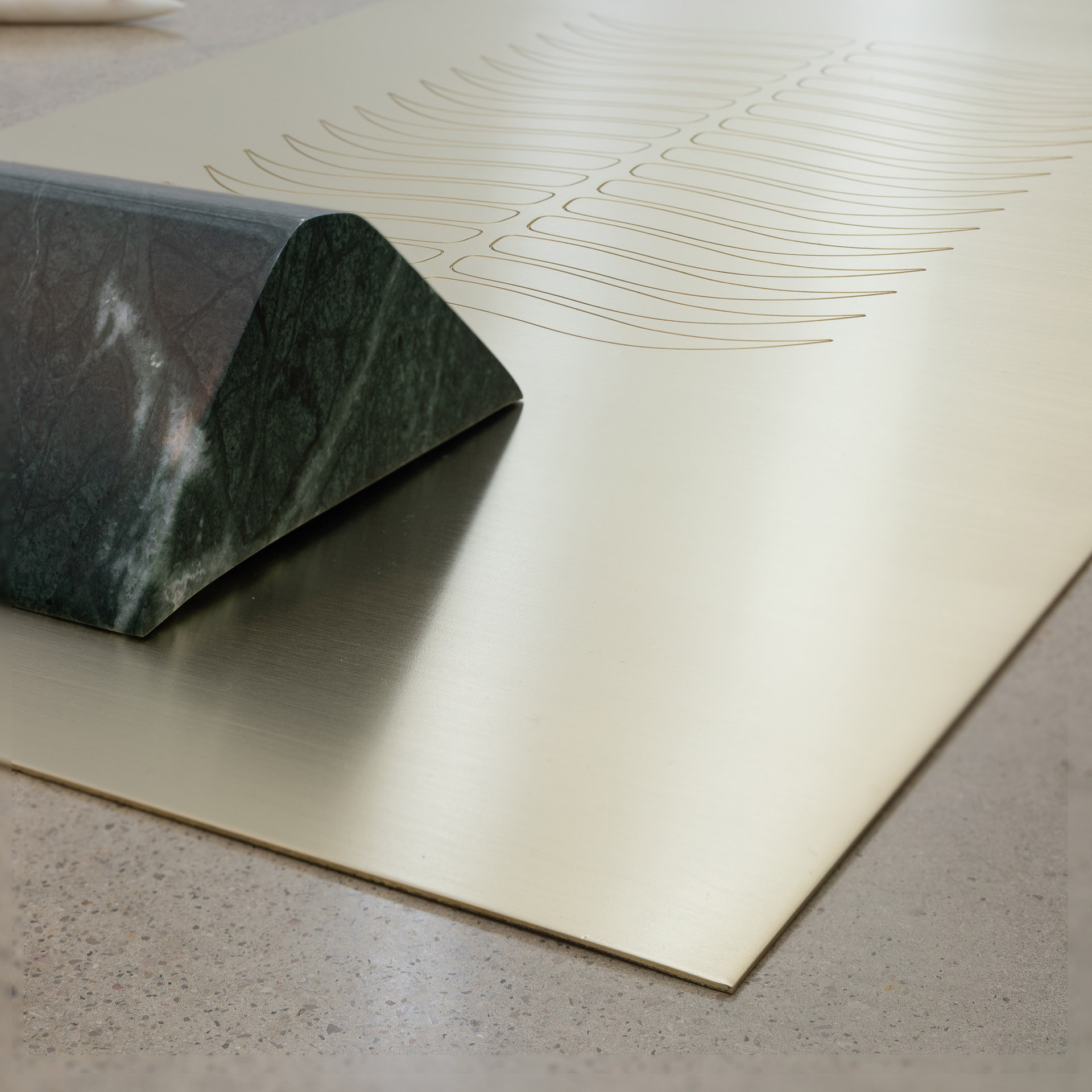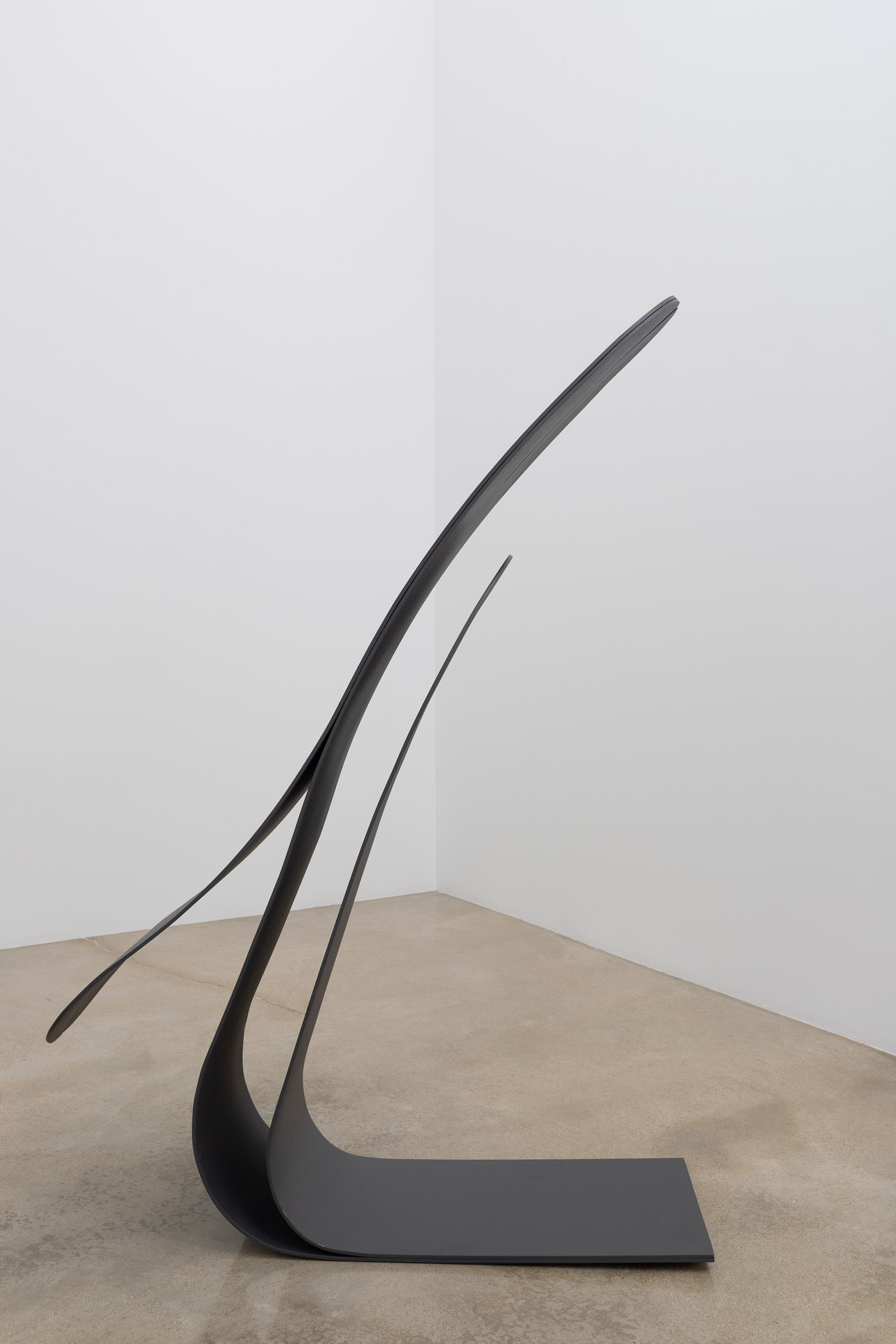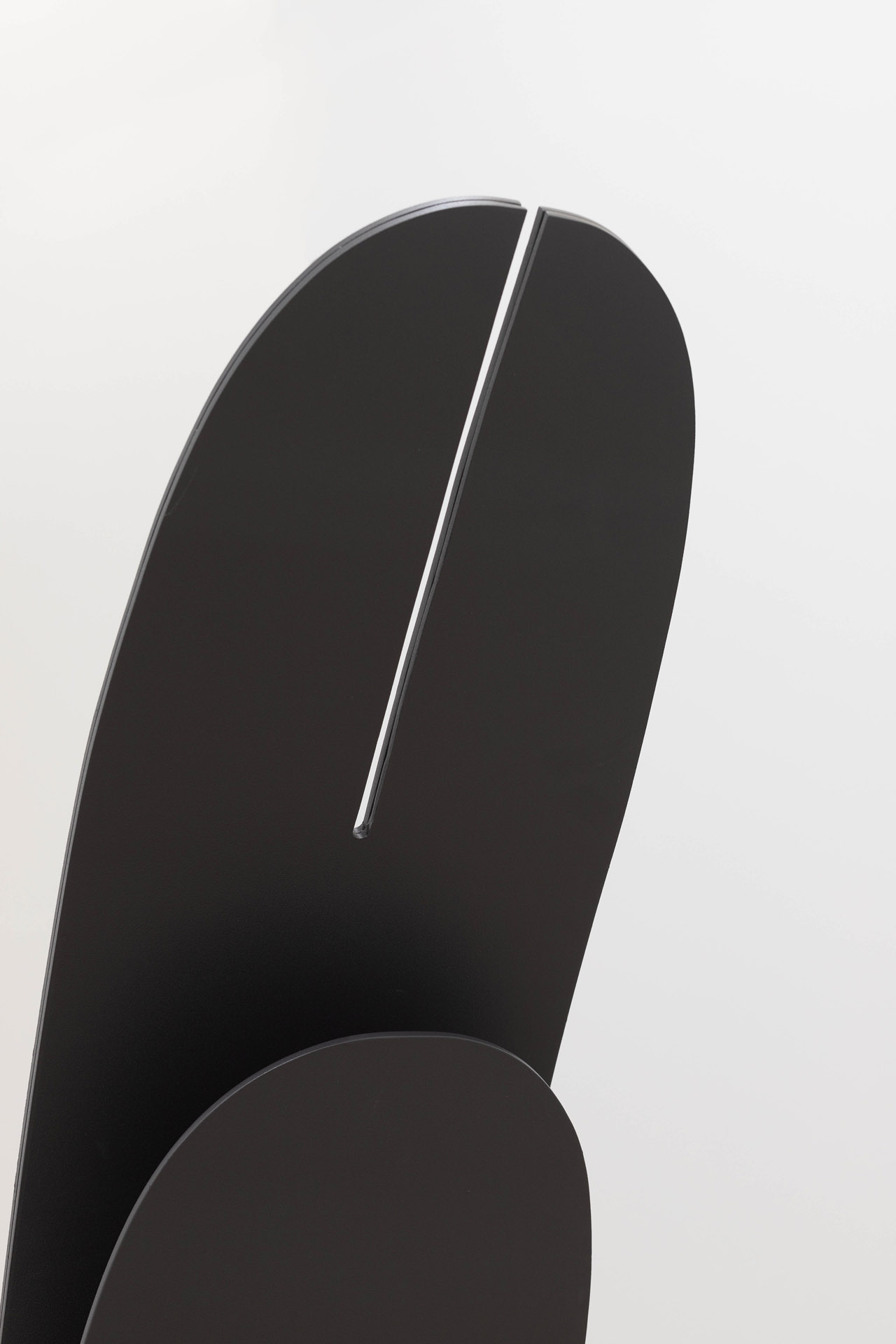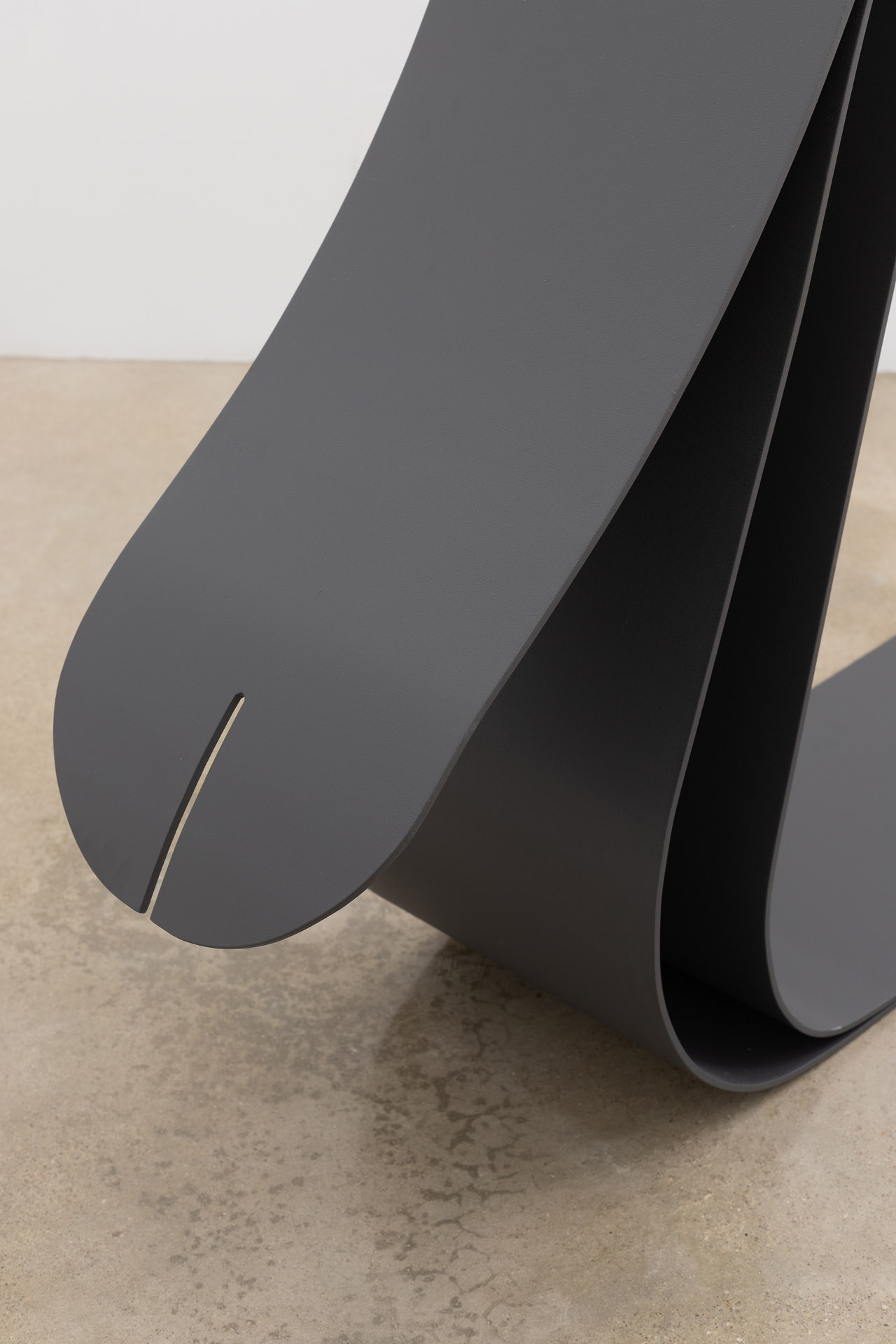Artist: Vera Mota
Exhibition title: From within the midst of things
Venue: L21 Gallery, Mallorca, Spain
Date: March 18 – May 25, 2022
Photography: Juan David Cortés / all images copyright and courtesy of the artist and L21 Gallery, Mallorca
Bodies touching bodies
If one lies down on one’s side, then one’s head ends up a few centimetres above the surface one is lying on, a distance equal to the breadth of one’s shoulder. We usually use a pillow to bridge this gap, but the ancient Egyptians used a headrest. An object consisted of a semicircular upper section placed under the skull, just above the ear, and one or more columns raising the upper part to the right height. Its use not only ensured a relatively comfortable position while sleeping, but also enabled air to circulate around the head, an added advantage in a warm climate like that of Egypt, as well as protecting the head from insects that could potentially damage this precious body part. I was not surprised when Vera Mota mentioned the trigger provoked by a headrest in the studio of Minimalist artist Donald Judd in Manhattan. The observation of this object made her reconsider where to place the head, and how its symbolic privilege is challenged in its dis/re/placement, wether it’s being lifted or brought down to the feet, as she suggested in previous works.
An echo of a headrest is encountered in Mota’s exhibition made in green marble and placed on top of a brass sheet which has been carved with a shape that reminds of an animal’s skeleton, and which it is actually the shape of a pair of eyebrows used for training in the cosmetic industry. The body is a continuos reference in her exhibition: a performative body in which the thing that matters is precisely matter. Her artistic language challenges the idea of it as passive and immutable, at the same time than expands the notion of the human body by representing parts such as nails, alongside prosthetic elements that serve the purpose of holding it. Offering an account of the materialization of all bodies – human and nonhuman – establishes a situation where agency is granted to our fleshy beings as much as to the matter around us which holds a vibrant vitality defined as “Thing-Power” by Jane Bennett[1]. Drawing and movement are intimately linked to the gesture that creates the works, the body’s expression and the graphic tracing is almost present in every piece of the exhibition where correlation and repetition create a flow joining them.
“From within the midst of things has the scratched surface of the canvas, irregular as a result of gestures by one given body and time; it has a marble pointing sculpture that resembles a nail; it has scratches again on the brass this time as a result of a mechanic process repeated rigorously, while the curves and colour of the headrest send us back to the waves and folds in the painting where the fragile curving lines take us to the rigid and still bouncing blades of iron from the sculpture Stance.”[2]
The works propagate shapes and directions in space summoning forms that upend perception and stimulate a kind of imagination where representation is disturbed while we are being moved by matter. Lines dominate the work, notably through the force and importance of horizontality and verticality. As some action is permanently crystallized through the materiality of the works, it seems natural to bring in Tim Ingold’s Lines: A Brief History (2007), a book which begins with this question, “What do walking, weaving, observing, singing, storytelling, drawing and writing have in common? The answer is that they all proceed along lines of one kind or another.”
Mota’s way of seeing form drags us to the realm of things, the contained pure, the ground of undifferentiated elements suggesting a lack of hierarchy between the material and that which it represents. Her practice reminds us that artworks are not autonomous entities that exist in themselves or whose content is containable. On the contrary, in their exhibition ecosystem they generate a series of conceptual and spatial relationships between themselves and the person who relates to them. Art objects are not as static as they appear to be, nor is the viewer the sole possessor of agency in this relationship.
-Cristina Ramos
[1] A concept developed in the essay “The force of things. Steps towards an Ecology of Matter”, 2011
[2] As described by the artist.
Vera Mota, From within the midst of things, 2022, exhibition view, L21 Gallery, Mallorca
Vera Mota, From within the midst of things, 2022, exhibition view, L21 Gallery, Mallorca
Vera Mota, From within the midst of things, 2022, exhibition view, L21 Gallery, Mallorca
Vera Mota, From within the midst of things, 2022, exhibition view, L21 Gallery, Mallorca
Vera Mota, From within the midst of things, 2022, exhibition view, L21 Gallery, Mallorca
Vera Mota, From within the midst of things, 2022, exhibition view, L21 Gallery, Mallorca
Vera Mota, From within the midst of things, 2022, exhibition view, L21 Gallery, Mallorca
Vera Mota, Untitled, 2021, Oil on paper, framed in aluminum, 61.5 x 43.5 cm
Vera Mota, Curve, 2021, Aluminum, 136 x 29 x 2.5 cm
Vera Mota, Untitled, 2021, Oil on paper, framed in aluminum, 61.5 x 43.5 cm
Vera Mota, Untitled, 2021, Oil on paper, framed in aluminum, 61.5 x 43.5 cm
Vera Mota, Untitled, 2021, Oil on paper, framed in aluminum, 61.5 x 43.5 cm
Vera Mota, Head rester, 2022, Marble and brass, 120 x 55 x 19 cm
Vera Mota, Head rester, 2022, Marble and brass, 120 x 55 x 19 cm
Vera Mota, Head rester, 2022, Marble and brass, 120 x 55 x 19 cm
Vera Mota, Head rester, 2022, Marble and brass, 120 x 55 x 19 cm
Vera Mota, Scraper, 2022, Carrara marble, 112.5 x 18 x 9.2 cm
Vera Mota, Stance, 2022, Iron, 150 x 110 x 36 cm
Vera Mota, Stance, 2022, Iron, 150 x 110 x 36 cm
Vera Mota, Stance, 2022, Iron, 150 x 110 x 36 cm
Vera Mota, Stance, 2022, Iron, 150 x 110 x 36 cm
Vera Mota, Dobra-Rasgo, 2022, Acrylic on canvas, 196 x 120 cm





